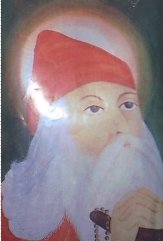JODHPUR - Sun City |
|
Demography (2001 census) |
Population (2001 census) |
2,880,777 (5.10% of the state) |
|
Literacy rate (2001) |
57.38% |
|
|
Below poverty line |
13.60% |
|
|
Infant mortality rate (IMR) |
65 |
|
|
Density of population
(persons/sq km): |
126 |
|
|
Men: |
1,509,563 (52.40 %) |
|
|
Women: |
1,371,214 (47.60%) |
|
|
Total rural population: |
1,908,518 |
|
|
Total urban population: |
972,259 |
|
|
% of Scheduled castes: |
15.3% |
|
|
% of Scheduled tribes: |
2.8% |
|
|
Birth rate |
34.01 |
|
|
Death Rate |
7.9 |
|
|
Sex-ratio (females/1000
males): |
908 |
|
|
Climate |
Max Temp |
45 �C |
|
Min Temp |
5.3 �C |
|
|
Average Rainfall |
303 mm |
|
|
Getting There |
Air |
Jodhpur has a domestic
airport: Indian Airlines operates flights from Delhi, Mumbai, Udaipur and
Jaipur |
|
Rail |
Connected by Western Railway,
with a station at Jodhpur. Jodhpur is connected by rail with Delhi, Jaipur,
Howrah, Ahmedabad and Lucknow |
|
|
Road |
Jodhpur is well-connected with
Delhi (597 km), Udaipur (260 km) and Jaipur (336 km) |
|
|
Physical |
Geographical Location |
Between 26�0' and 27�37' north
latitude and 72�55' and 73�52' east longitude |
|
Area |
22,850 sq km |
|
|
North: Bikaner and Jaisalmer South: Pali and Barmer East: Nagaur West: Barmer and Jaisalmer |
||
|
Major Urban Centers |
Jodhpur, Phalodi, Pipar,
Bilara |
|
|
Major Crops |
Millets, sesame |
|
|
Major Rivers |
Luni, Jojri |
|
|
# of Sub-districts |
3 |
|
|
Language |
Language |
Rajasthani and Hindi |
|
Economy |
Industries |
Zinc, oil mills, textiles, iron,
cement, marble chips, chemicals, village cottage industries |
|
Industrial centers |
Jodhpur |
|
|
Main markets |
Bilara, Pipar City,
Bhopalgarh, Mathania, Pholodi, Balesar, Jodhpur City |
|
|
Main banking centers |
Jodhpur, Pholodi, Pipar |
|
|
Medical Facilities |
Hospitals |
Community health centres: 5,
primary health centres: 75, mother and child welfare centres: 4, sub-centres:
448, TB hospitals: 2 |
|
Health facilities |
The district has a network of
government-run health facilities. There are 80 community health centres |
|
|
Blood banks |
2 |
|
|
Food |
Food |
Wheat chappatis, pulses,
vegetables, curd, ghee, buttermilk |
|
Transportation and
Communication |
Post and telegraph services |
Post offices: 402, post &
telegraph offices: 40 (1998-99) |
|
State highways passing
through the district and road services |
Jodhpur is easily accessible
by state highways. State Highway 16 connects Jodhpur with Pali district.
State Highway 28 connects Phalodi with Jodhpur. NH 15 connects the district with
Jaisalmer and Bikaner dsitricts. Other important roads of the district are:
Chadi-Phalodi road, Phalodi-Jodhpur road, Soila- Jodhpur road, Kharia-Jodhpur
road, Kankani- Jodhpur road |
|
|
Important railway stations
and railway services |
Jodhpur |
|
|
Culture and Religion |
Fairs and Festivals |
Shitalamata utsav, Birpuri mela, Porikroma mela, Bijanath mela, Noa Sati mela, Pal Balaji Pashu mela, Mukam mela of BISHNOIs |
|
Religious Places |
Jodhpur, Bhondor, Arna |
|
|
Hotels |
Umaid Bhawan Palace, Taj Hari Mahal, Ratnada Polo Palace, Ajit Bhawan, Balsamand Palace, Hotel Karni Bhawan, Quality Inn Chandra, Durjan Niwas Palace |
|
|
Mehrangarh Fort (5 kms) : Guarding the city below, crowning a perpendicular cliff, the fort was founded by Rao Jodha in 1459 AD when he shifted his capital from Mandore. |
||
|
History |
Once the capital of Marwar state, Jodhpur was founded in 1459 AD by Rao Jodha, chief of the Rathore clan of Rajputs, who claimed to be descendants of Rama, the epic hero of the Ramayana. The massive 15th century AD Mehrangarh Fort looms on the top of a rocky hill, soaring 125 metres above the plains. The city is encompassed by a high wall, 10 km long with 8 gates and innumerable bastions.A major trade centre of the 16th century AD the fortress-city of Jodhpur is now the second largest city of Rajasthan. |



